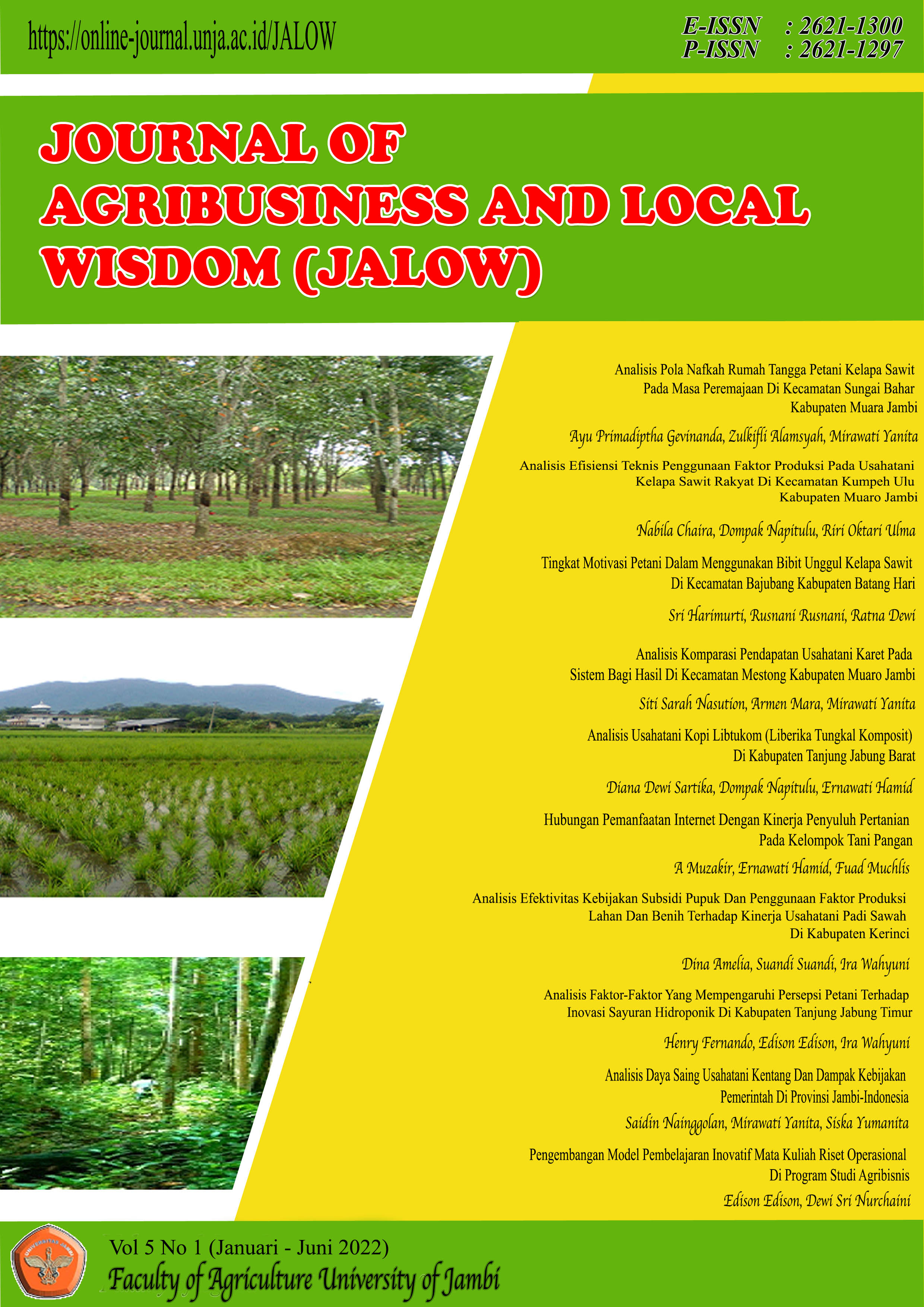Analisis Efisiensi Teknis Penggunaan Faktor Produksi Pada Usahatani Kelapa Sawit Rakyat Di Kecamatan Kumpeh Ulu Kabupaten Muaro Jambi
DOI:
https://doi.org/10.22437/jalow.v5i1.19739Keywords:
Technical Efficiency, Production Factors, Smallholder Oil Palm FarmingAbstract
The analytical method used in this research is descriptive analysis to see the first objective. Meanwhile, to see the second objective, inferential analysis was used. R2 test, F test and T test. Furthermore, to see the third objective, the Cobb - Douglas Production Function equation was used with Frontier regression approach.
Based on the results of the research that has been carried out, the following conclusions can be drawn: 1. Farmers operate oil palm farming with an average production of 36,520 Kg/Year or productivity of 12,233 Kg/Ha/Year, land area of ​​2.94 Ha, number of trees 119 Trees /Ha with an equilateral triangle cropping pattern, labor 38.94 HKO/Ha, fertilizer 225.55 Kg/Ha, pesticide 2.72 Liter/Ha and seeds using tenera and dura seeds. 2. The use of land production factors, number of trees, labor, fertilizers, pesticides and seeds simultaneously significantly affects the production of oil palm with an Adjust R-Squared value of 0.96. Partially for the land production factor, the number of trees, labor, fertilizers, and pesticides have a significant effect on production, while the seed factor has no significant effect on production. 3. The level of technical efficiency of oil palm farmers in the research area obtained a minimum value of 0.70 and a maximum value of 0.99 with an average of 0.88 < 1, which means that the level of technical efficiency has not been achieved. Therefore, oil palm farming in Kumpeh Ulu District is not technically efficient.












